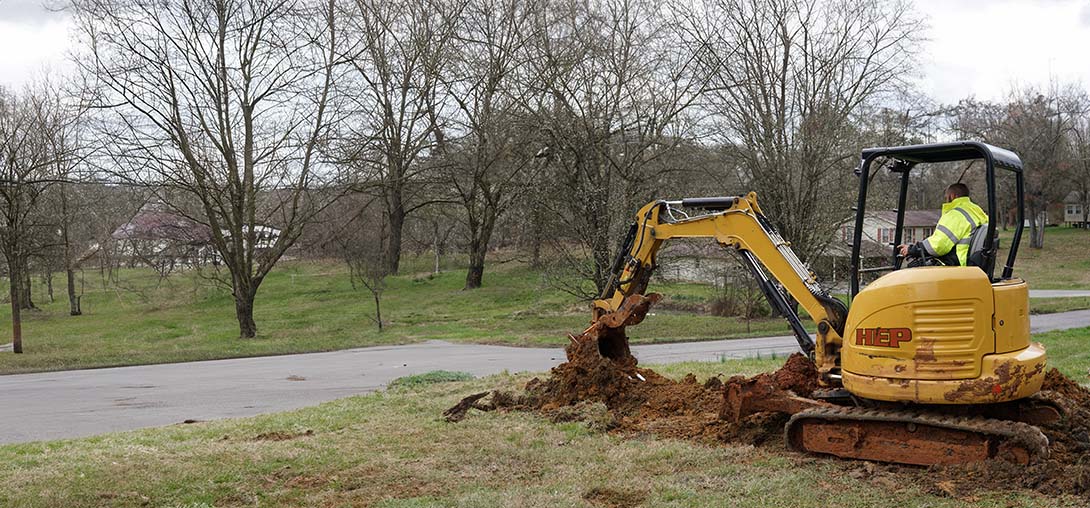- HEP
- Main Line Challenges

 Main Line Challenges
Main Line Challenges
Main Line Challenges | Main Line Issues | Plumbing | Heiskell
From stubborn blockages that send wastewater gurgling into your tub to hidden breaks that swamp the yard, HEP’s plumbing pros have seen every nightmare a home’s main line can unleash. We combine state-of-the-art camera inspections, precision hydro-jetting, and trenchless repair methods to fix the problem fast while protecting your landscaping—and your sanity. You’ll get honest answers, upfront pricing, and the confidence that comes from a team trusted in Heiskell for more than two decades.
When you’re staring down main line issues, don’t settle for temporary patches. Call HEP day or night and we’ll send a certified technician who treats your home like their own, explains every option, and backs the work with iron-clad guarantees. One visit, one solution, and the water flows exactly where it should.
FAQs
What warning signs indicate a problem with my home’s main sewer line?
Common red flags include repeated drain backups or slow-moving fixtures throughout the house, gurgling sounds in toilets when other fixtures drain, foul sewer odors inside or outdoors, water pooling or unusually green patches in the yard, and basement floor-drain overflows. If more than one fixture is affected at the same time, the main line—not the individual branch drains—is usually to blame.
What typically causes main line clogs or damage in Heiskell?
In our East Tennessee region, the leading culprits are tree-root intrusion (especially from maples, oaks, and sweetgums), buildup of grease and flushed wipes, older clay or Orangeburg pipes that have deteriorated, ground shifting from seasonal freeze–thaw cycles, and stormwater infiltration during heavy rains. Construction debris from past remodeling projects and toys or feminine products accidentally flushed can also lodge and create obstructions.
How will a plumber diagnose a main line issue?
After an initial symptom assessment, we run a high-resolution sewer camera through the clean-out to visually confirm the blockage, cracks, or roots. Depth and location are pinpointed with an electronic signal transmitter on the camera head. In some cases we follow up with a hydrostatic pressure test or a fluorescent-dye flood test if infiltration or leaks are suspected. This non-invasive approach lets us show you real-time footage so you understand exactly what needs attention.
What repair or replacement methods are available for a damaged main line?
Options range from least to most invasive: • Power snaking or augering—good for soft clogs close to the clean-out. • Hydro-jetting—high-pressure water scours grease and small roots. • Trenchless pipe lining (CIPP)—a resin-soaked liner is inverted into the pipe and cured to create a seamless new pipe inside the old one. • Pipe bursting—breaks the old pipe while simultaneously pulling a new HDPE line through the same path. • Traditional excavation and pipe replacement—used when the pipe is collapsed, severely offset, or lacks proper slope. Your plumber will weigh age of the line, material, depth, yard obstacles, and budget before recommending the best solution.
How much does main line repair or replacement cost in the Heiskell area?
Pricing depends on pipe length, depth, material, accessibility, and chosen repair method. As a ballpark, mechanical cleaning runs $250–$600, hydro-jetting $400–$900, trenchless lining $90–$160 per foot, and full excavation replacement averages $4,000–$12,000 for a typical 40- to 60-foot run. Local permit fees and landscape restoration are extra. We provide a written, no-obligation estimate after the camera inspection so you know the exact cost before work begins.
How can I prevent future main line backups and extend the pipe’s life?
1. Keep grease, coffee grounds, and wipes out of drains—use the trash can instead. 2. Install a backwater valve if your home sits below street level to stop municipal surges. 3. Have a licensed plumber perform an annual camera inspection and, if needed, preventative hydro-jet cleaning. 4. Use root-control treatments or install root barriers if large trees are within 10 feet of the line. 5. Replace failing clay or Orangeburg sections proactively before they collapse. 6. Ensure downspouts and sump pumps discharge to the yard, not the sewer, to reduce hydraulic load during storms. Following these practices drastically reduces emergency calls and protects both your plumbing and property.